Leitrim, in the province of Connacht, northwestern Ireland 作者: 来源: 发布时间:2021-04-12
I.Population and Area
Population in 2011:31,796
Population in 2016:32,044
Population Density: 20 people per square km(2011)
Total Area: 613.90 sq miles
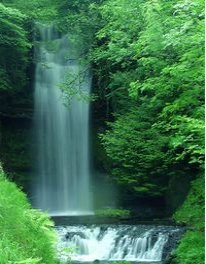
II.Natural Geography (Environment, resource and transportation)
Leitrim is the 26th largest of the 32 counties by area and the smallest by population on the island. It is the smallest of Connacht’s 5 counties in both size and population. Leitrim is bordered by the counties of Donegal to the north, Fermanagh to the north-east, Cavan to the east, Longford to the south, Roscommon to the south-west and Sligo to the west. Fermanagh is in Northern Ireland while all the other neighbouring counties are within the Republic.
Leitrim has a hilly and mountainous landscape in its north-west and is relatively flat in the south-east, each separated from the other by Lough Allen in the middle of the county. Leitrim has the shortest length of coastline of any Irish county that touches the sea. At Tullaghan, the coastline is only 2.5 kilometres (1.6 mi) long. The Shannon is linked to the Erne via the Shannon-Erne Waterway. Notable lakes include:
Lough Gill is to the northwest of Dromahair; Parke's Castle is located on the lake shore.
Belhavel Lough is also located in Dromahair, within the parish of Killargue.
Lough Scur, and Saint John's Lough, on the Shannon–Erne Waterway.
Other lakes include Upper Lough MacNean, Glencar Lough, Glenade Lough, Garadice
Lough, Rinn Lough, Lough Scannal, Lough Erril and Lough Machugh.
Reference website: https://kids.kiddle.co/County_Leitrim
Transportation:
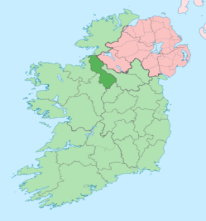
Supplementing the local and regional road networks are the N15 (Sligo-Leitrim-Donegal), N16 (Sligo-Leitrim-Enniskillen) and N4 (Sligo-Leitrim-Dublin) national roads.
Railway stations in Leitrim on the Dublin to Sligo line include Dromod and Carrick-on-Shannon.
The Cavan and Leitrim Railway opened on 17 October 1887. It consisted of two branches, meeting at Ballinamore which connected Dromod and Arigna with Belturbet. Services carried goods, passengers and coal from around Lough Allen. Although protested, the line finally closed on 31 March 1959.
Railway stations in Leitrim on the former Sligo, Leitrim and Northern Counties Railway (which ran between Sligo and Enniskillen) included Dromahair, Manorhamilton and Glenfarne.
The Shannon and Shannon-Erne Waterway give access to much of Leitrim by boat.
County Leitrim is 92 mi from Dublin Airport (Dublin, Ireland). Dublin Airport (Dublin, Ireland) Right now, 49 airlines operate out of Dublin Airport. Dublin Airport offers nonstop flights to 119 cities. Every week, at least 84 domestic flights and 1,082 international flights depart from Dublin Airport.
III.ECONOMY
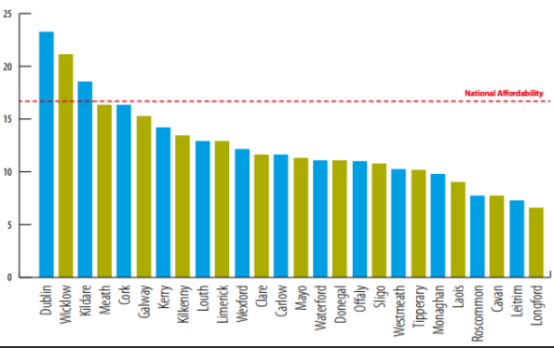
IV.Industrial Characteristics:
1)Leitrim Crystal
Leitrim Crystal in Carrick-On-Shannon, County Leitrim is home to the workshop of Ken and Sandra Cunningham. See firsthand the various pieces being designed, cut, and engraved by a master crystal glass cutter.
2)Valspar Industries limited Ballinamore
Establishment and lodging at Willowfield Road, Ballinamore, County Leitrim, Ireland. Here you will find detailed information about Valspar Industries (Ireland) Limited: address, phone, fax, opening hours, customer reviews, photos, directions and more.
V.Attractions
Glencar Waterfall: beautiful place lower level suitable for wheelchair user a lot of steps to climb and is a bit slippy at very top view is stunning.Beautiful place,very scenic, the area itself is wonderful First taste of Sligo.
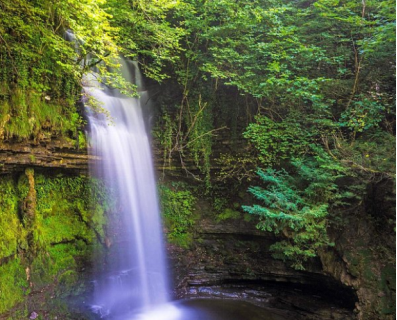
Parke's Castle We toured Parke’s Castle this other day. It is a small castle on the shores of Lough Gill. We watched a movie about the castle and the surrounding area with its heritage sites. We then took a guided tour of the Castle. Our guide was excellent. She explained the extensive history of the site and the process to restore it.
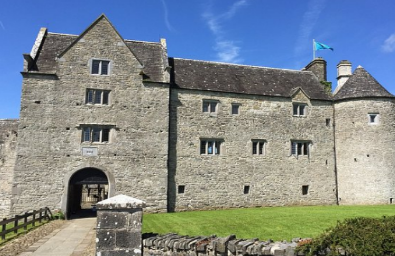
VI.History
In ancient times Leitrim formed the western half of the Kingdom of Breifne. This region was long influenced by the O'Rourke family of Dromahair, whose heraldic lion occupies the official county shield to this day. Close ties initially existed with the O'Reilly clan in the eastern half of the kingdom, however a split occurred in the 13th century and the kingdom was divided into East Breifne, now County Cavan, and West Breifne, now County Leitrim. The Normans invaded in the 13th century and occupied the south of Breifne. Much of the county was confiscated from its owners in 1620 and given to Villiers and Hamilton. Their initial objective was to plant the county with English settlers. However, this proved unsuccessful. English Deputy Sir John Perrot had ordered the legal establishment of "Leitrim County" a half-century prior, in 1565. Perrott also demarcated the current county borders around 1583.
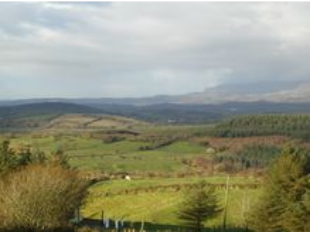
Long ago Ireland was covered in Woodland, and five great forests are traditionally said to have stood in Leitrim, with a 19th century county survey stating- “a hundred years ago almost the whole country was one continued, undivided forest, so that from Drumshanbo to Drumkeeran, a distance of nine or ten miles, one could travel the whole way from tree to tree by branches". Many of these great forests were denuded for the making for Charcoal for Iron works around Slieve Anierin. Writing in 1791, the geographer Beaufort suggested the county housing population encompassed 10,026 homes with "upwards of 50,000 inhabitants", the primary agriculture being cattle production, and the growth of flax sustaining the linen industry.
Leitrim was first hit by the recession caused by the mechanisation of linen weaving in the 1830s and its 155,000 residents (as of the 1841 census) were ravaged by the Great Famine and the population dropped to 112,000 by 1851. The population subsequently continued to decrease due to emigration. After many years, the wounds of such rapid population decline have finally started to heal. Agriculture improved over the last century. Leitrim now has the fastest growing population in Connacht.
Working of the county's rich deposits of iron ore began in the 15th century and continued until the mid 18th century. Coal mining became prominent in the 19th century to the east of Lough Allen at Slieve Anierin and also to the west in Arigna, on the Roscommon border. The last coal mine closed in July 1990 and there is now a visitor centre. Sandstone was also quarried in the Glenfarne region. William Butler Yeats spent the turn of the twentieth century fascinated with Lough Allen and much of Leitrim. Glencar Waterfall, 11 kilometres (7 mi) from Manorhamilton, inspired Yeats and is mentioned in his poem The Stolen Child.
VII.Other information:
There are five historic baronies in the county. While baronies continue to be officially defined units, they are no longer used for many administrative purposes. Their official status is illustrated by Placenames Orders made since 2003, where official Irish names of baronies are listed under "Administrative units". They are Carrigallen, Drumahaire, Leitrim, Mohill and Rosclogher.
VIII.Contact information
-Mayor
Mary Bohan
Drumkeerin, Co Leitrim
Email: marybohan@leitrimcoco.ie
Phone: 071 9648001
Reference website: http://www.leitrimcoco.ie/eng/Your-Council/Councillors/County-Councillors.html
